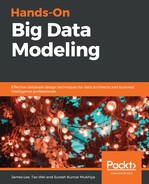An enterprise is closely connected with people, place, animations, or things, and their interests. A data model provides a visual representation of these aspects. In addition to providing visual cues, a data model acts as a communication guideline between technical and non-technical stakeholders, such as people. Since a data model is composed of symbols that illustrate the concepts that should be communicated and agreed upon, it is often termed the blueprint of the data. These so-called blueprints are constructed at several distinct levels and details, ranging from high-level requirements, to basic architectural layout requirements, to detailed design specifications. These blueprints (or models) can be constructed at different levels of design, referred to as levels of data modeling. There are three levels of data modeling: conceptual data modeling, logical data modeling, and physical data modeling.
The conceptual data model (CDM) resides at the top, providing a satellite view of the business solution. Also, the CDM gives a context and scope to the logical data model (LDM), which produces a detailed business solution. The LDM is the starting point for applying the influence of technology in the physical data model. The following diagram illustrates the different levels of data modeling, along with their purposes:

